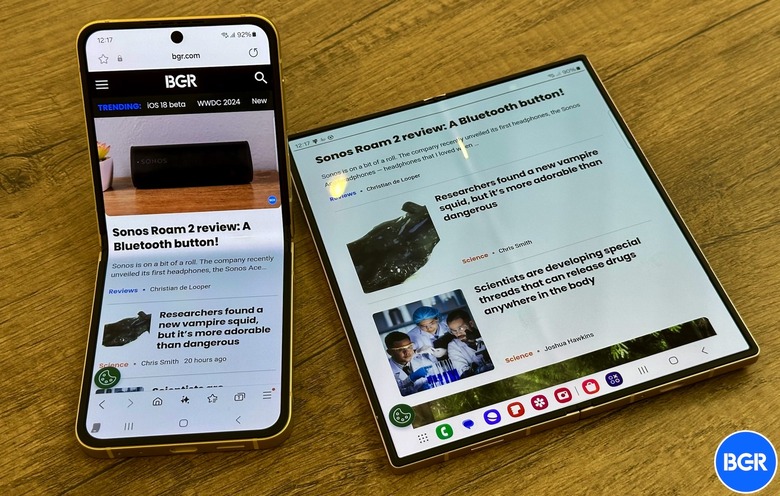Hands-On: Do The Galaxy Z Fold 6 And Flip 6 Still Have Really Bad Screen Creases?
The Galaxy Z Fold 6 and Galaxy Z Flip 6 are available for preorder right now, and you should probably get your preorder in quickly to save as much money as possible. The two handsets are $100 more expensive than their predecessors, starting at $1,899 and $1,099, respectively.
While they look a lot like the previous-generation models, the two devices come with various upgrades. It's not just the specs. Samsung has improved the designs of both foldables, making the Fold 6 and Flip 6 even more durable than before. That includes design changes for the hinges and foldable displays of the two phones.
However, that extra $100 won't get you a phone with a perfect foldable screen that hides the crease when opened flat. Not this year, at least.
Rumors preceding the Unpacked event in Paris, France, said the Fold 6 and Flip 6 might feature slightly thicker Ultra Thing Glass (UTG) panels and a new hinge. These improvements were expected to let Samsung reduce the thickness of the Galaxy Z Fold 6 and make the crease above the hinge less visible than before.
Samsung confirmed the hinge and screen redesign during the show and in briefings I attended before Wednesday's event. Unfortunately, the crease has not disappeared. It remains a major design compromise we all have to accept if we want foldable phones today.
For comparison purposes, here's what the crease of the Galaxy Z Fold 5 looks like in real life:
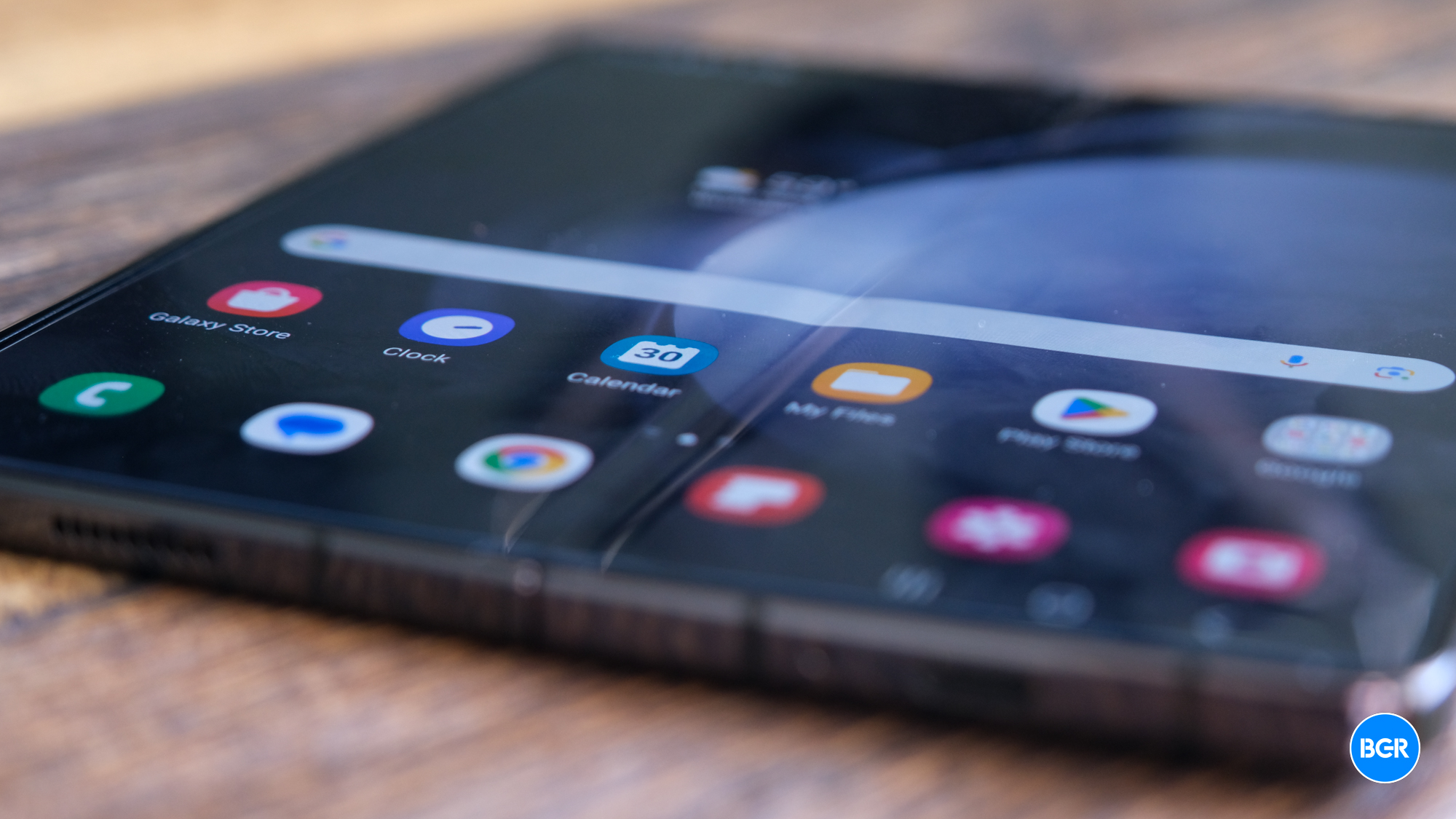
For the Galaxy Z Fold 6 and Flip 6, Samsung has improved the dual rail hinge with a strenghtend folding edge that should distribute external shocks better than previous models.
Here's a look at the new hinge tech in Samsung's latest foldable:
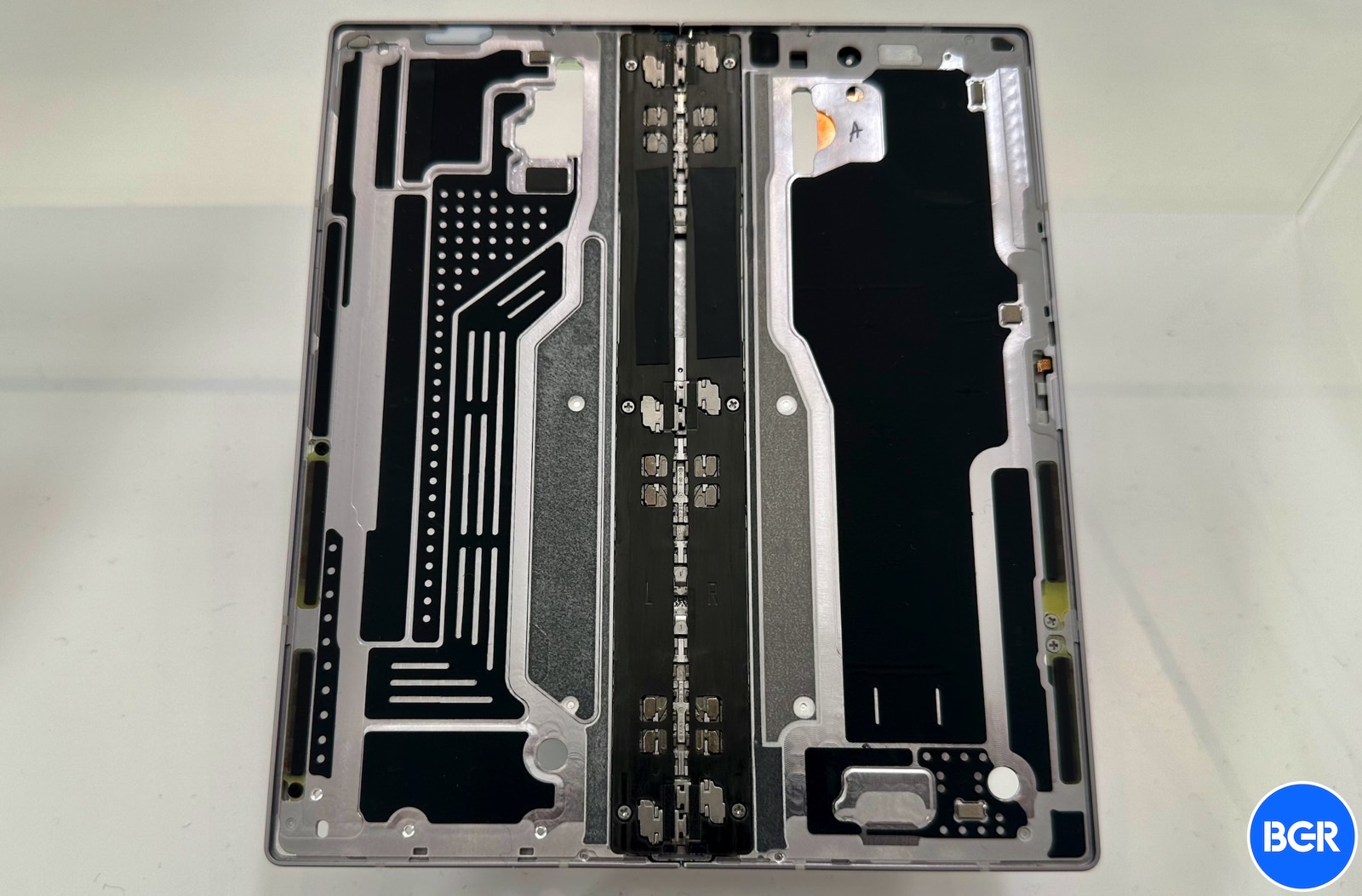
Samsung also improved the foldable displays for this year's models. During Unpacked, Samsung said it developed a new Shear Thickening Fluid (STF) glue that adapts to multiple types of pressure. The STF coats the external glass layer.
According to a video Samsung played during Unpacked, the STF material allowed engineers to remove some of the foldable screen layers while "maintaining its durability and improving flatness."
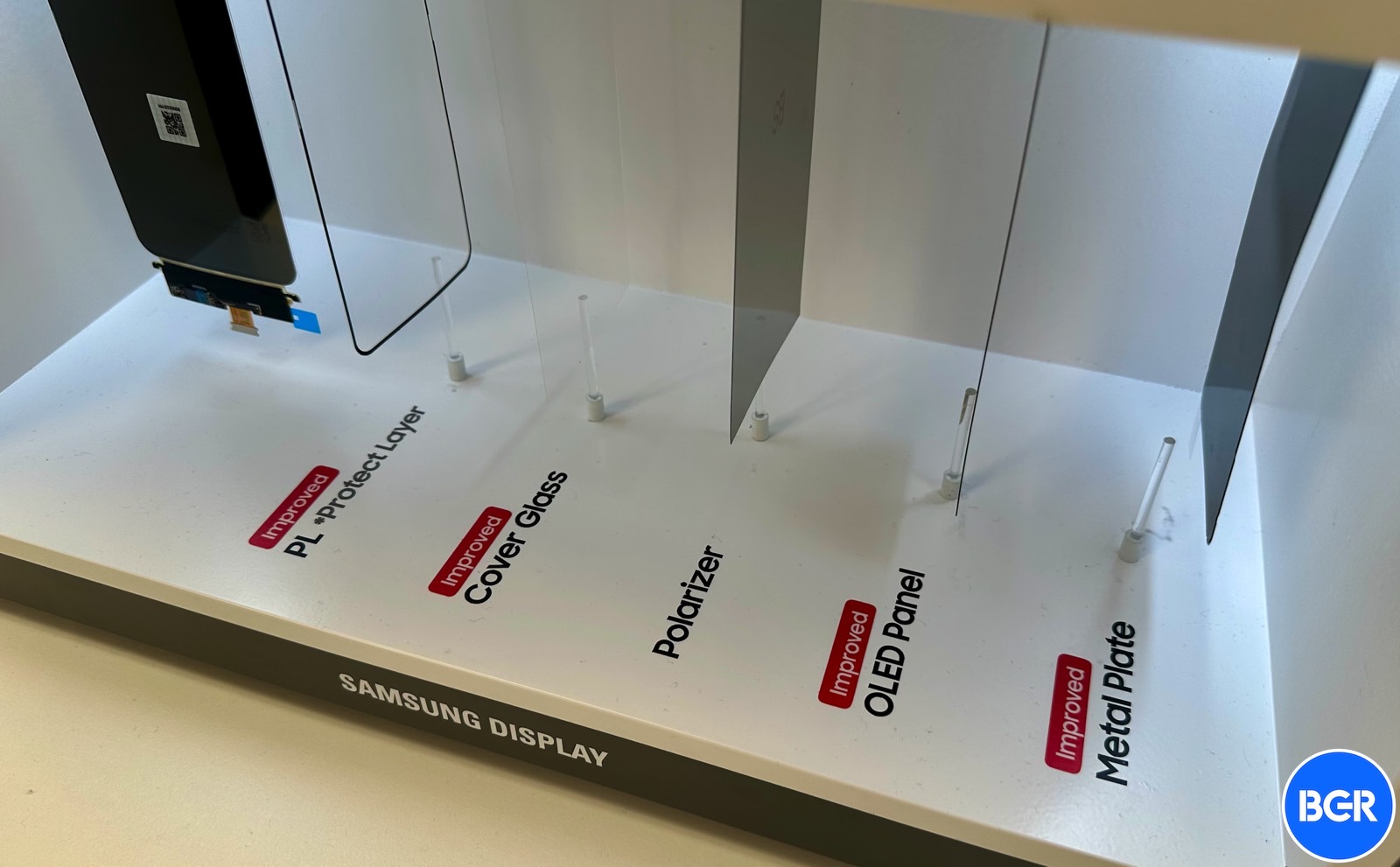
In its press announcements, Samsung said the "enhanced layers of the main screen help to improve the crease while maintaining strength."
There's no denying that Samsung has been improving the quality and durability of its foldable screens. These upgrades might not seem like much from year to year, but the Galaxy Z Fold 6 and Flip 6 will be a lot more durable than the first Fold and Flip generations.
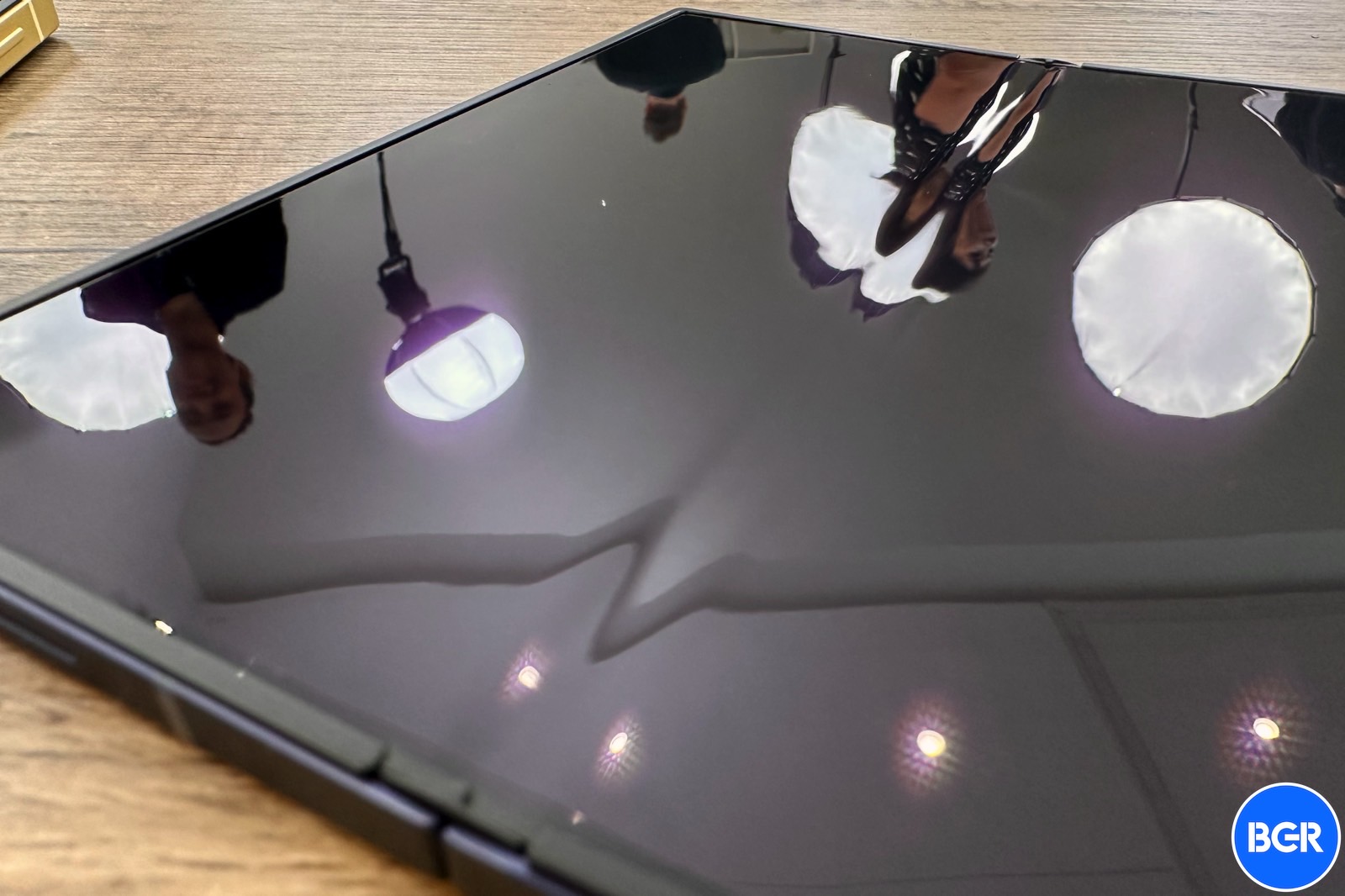
Also, remember that the Fold 6 and Flip 6 are the first to feature a dust resistance rating. Both devices are IP48 for dust and water resistance, compared to IPX8 for the previous generation. Sure, it's not as good as IP68, the standard for non-foldable phones, but it's still an upgrade.
However, in real life, hands-on experiences, the crease is visible. I could see it with the screen turned on and off — just look at the photos in this post. I was also able to feel the crease when scrolling past the hinge.
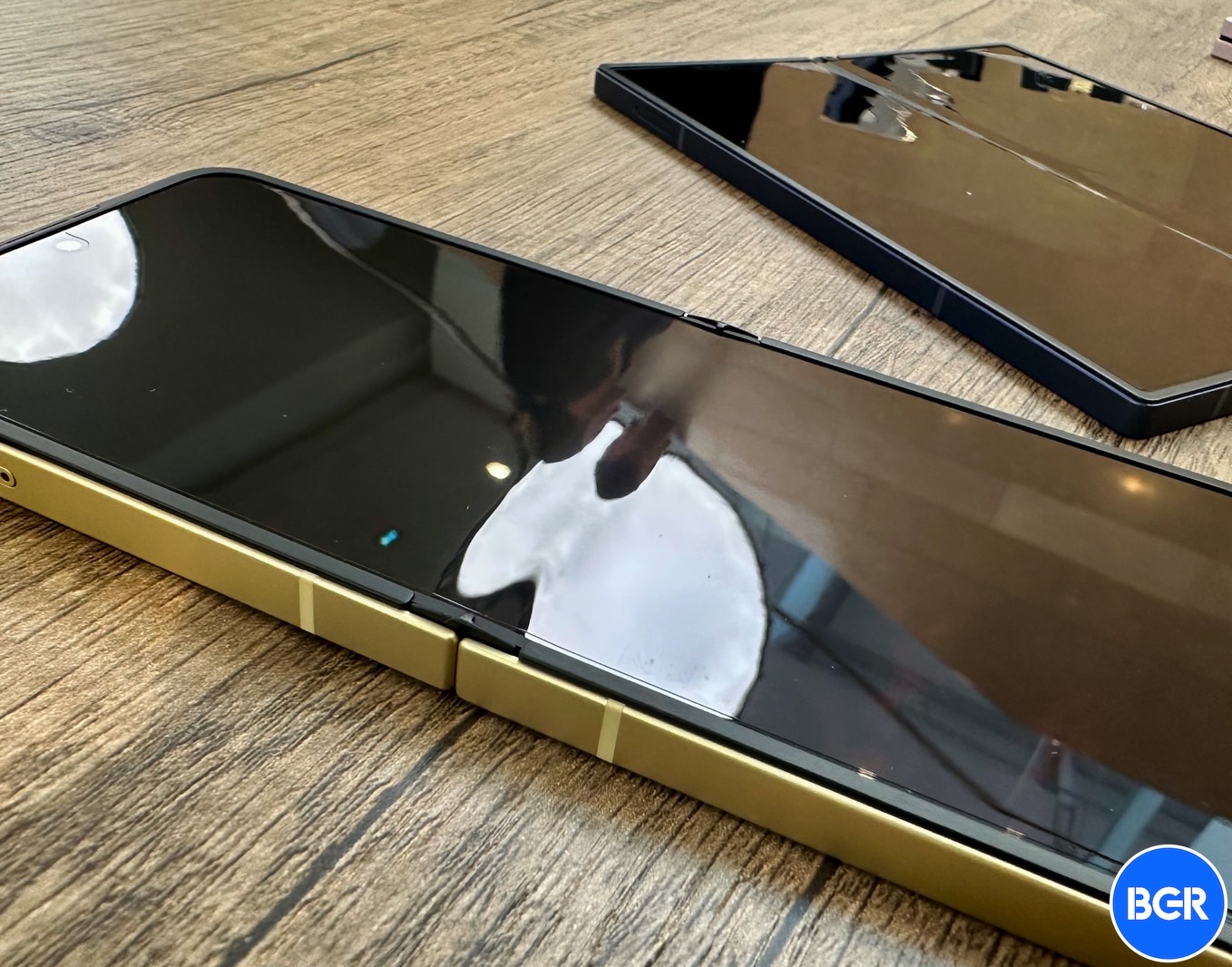
You can always head to an electronics store near you to experience the crease on the Galaxy Z Fold 5 and Flip 5 before doing the same thing with the Flip 6 and Fold 6. You'll find the crease is still there, and there's nothing you can really do about it.
As I said, this is a compromise you need to accept from Samsung foldable phones in 2024. We're six generations in, but Samsung has not eliminated the crease. Until it does, I'm afraid we won't have foldable iPhones of any kind. Reports say Apple doesn't like the crease, and that's a major concern for foldable iPhones.
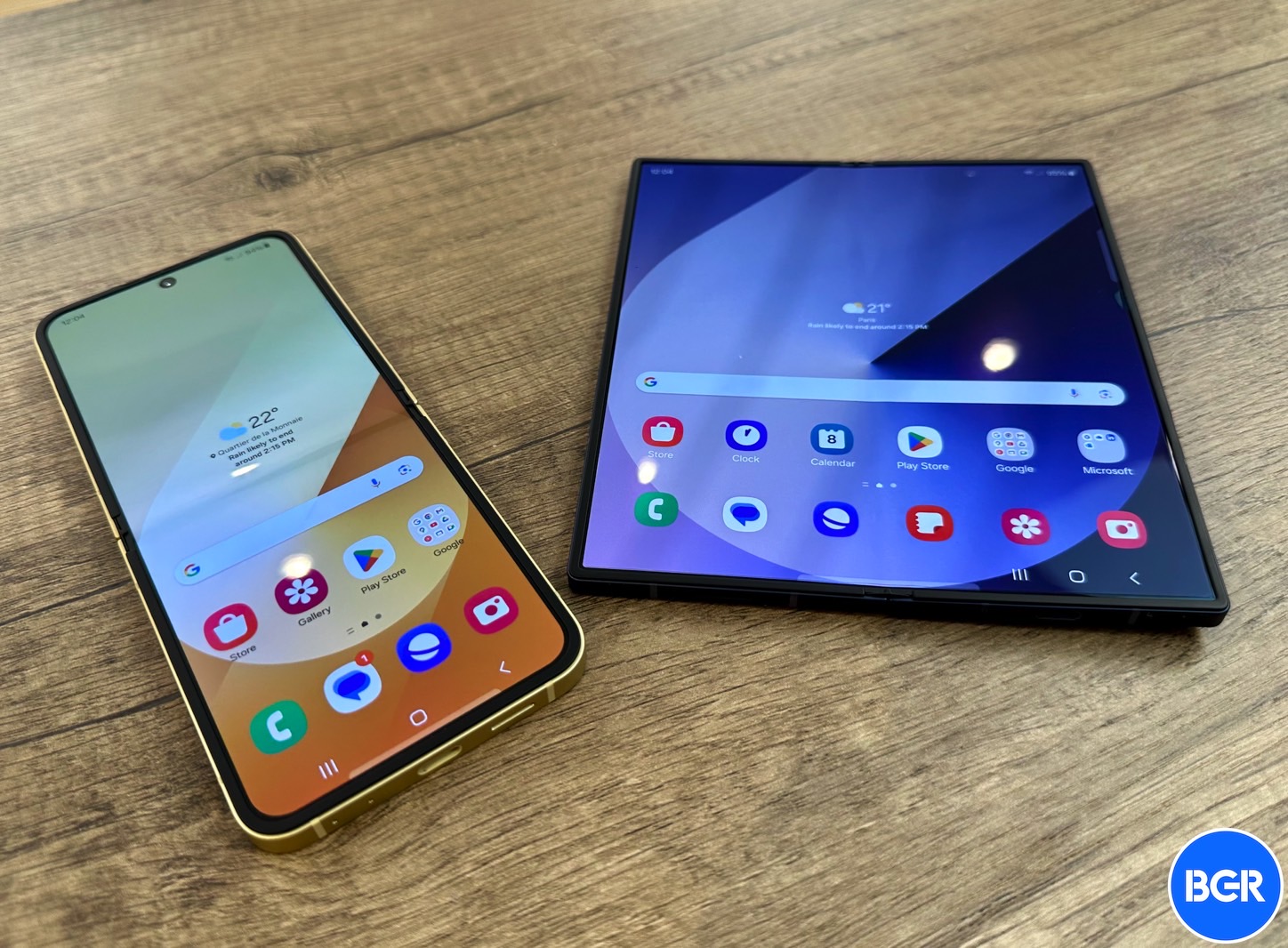
It'll be interesting to see the foldables that come out of China this year, and whether they feature better creases.
